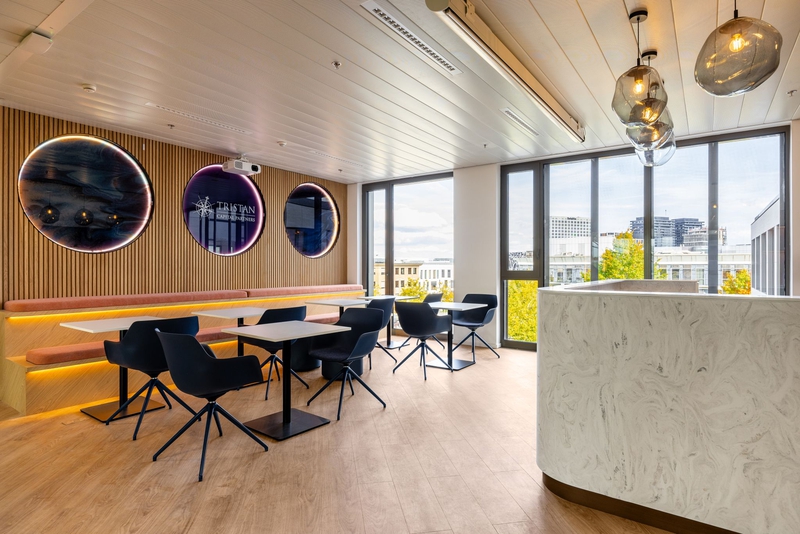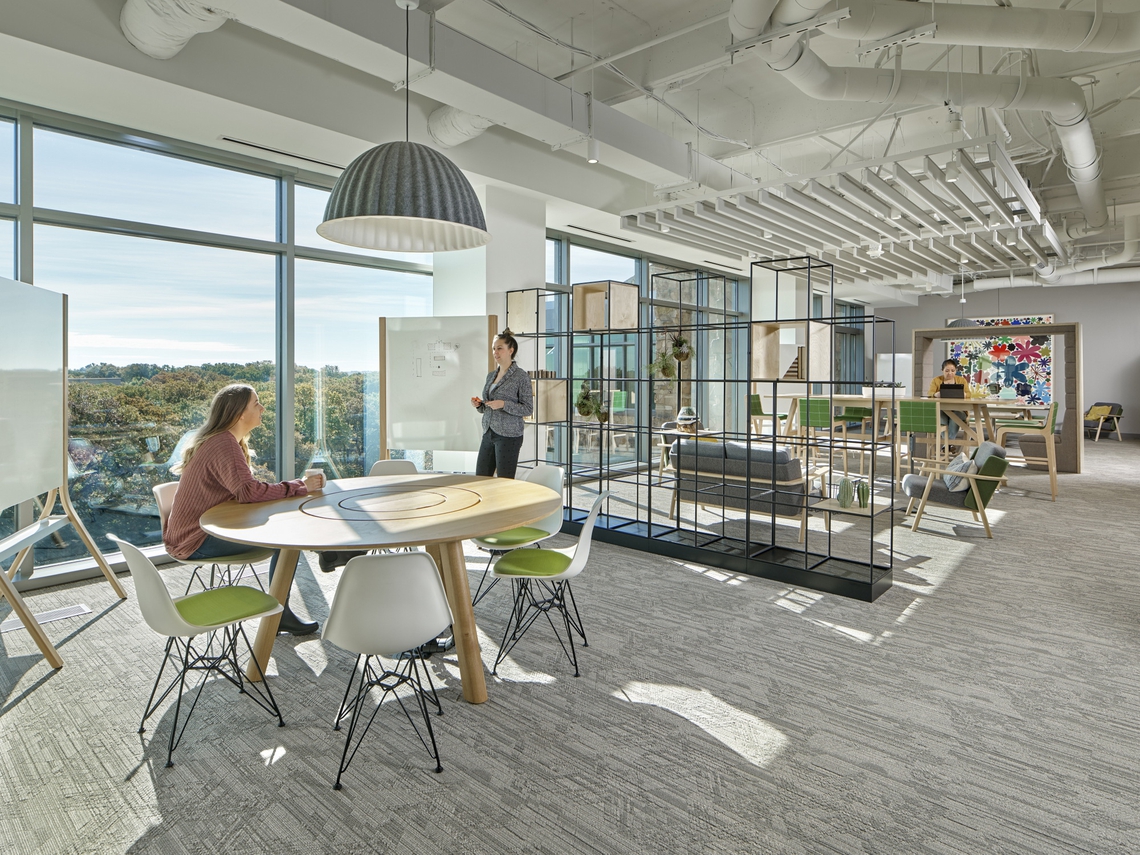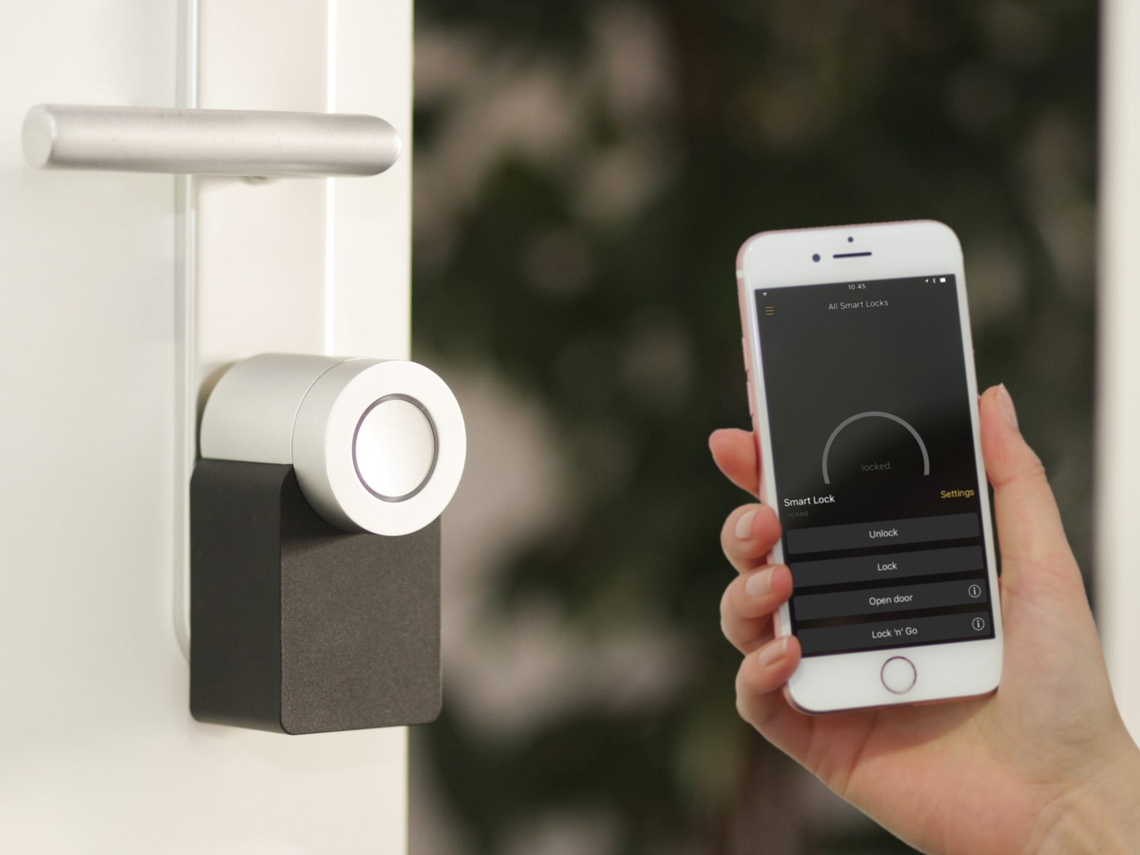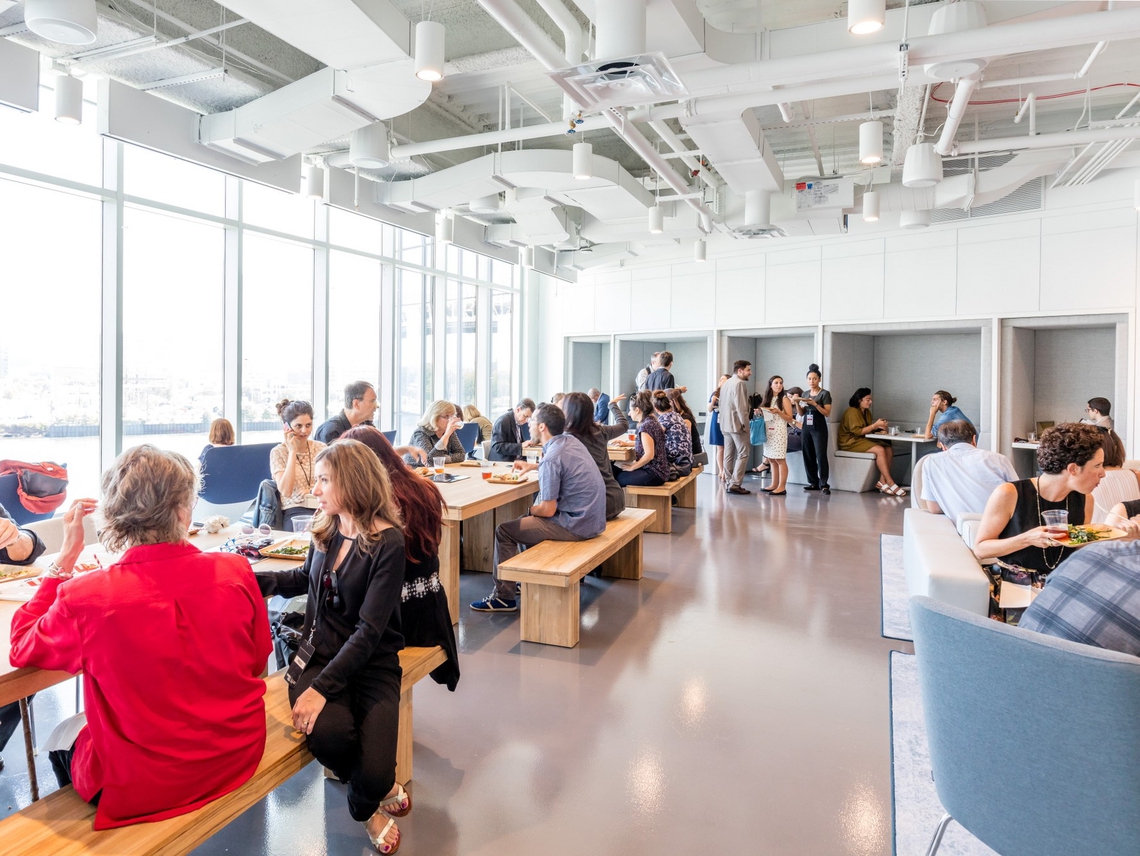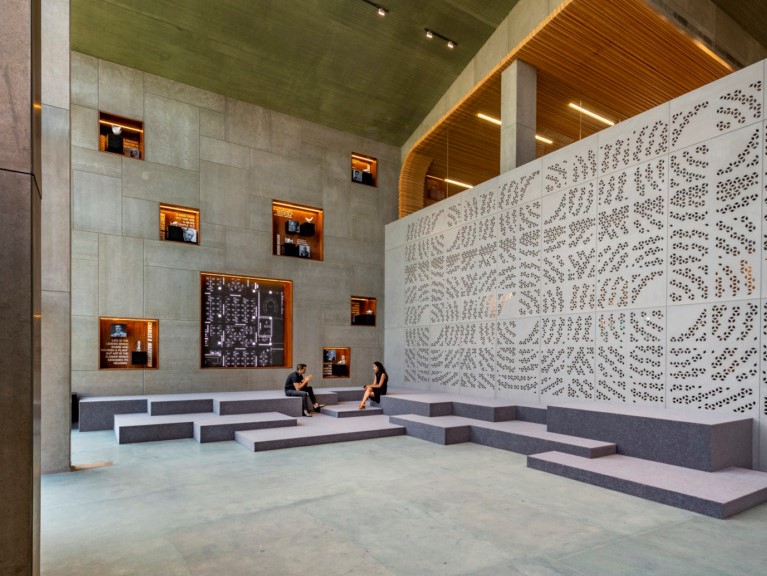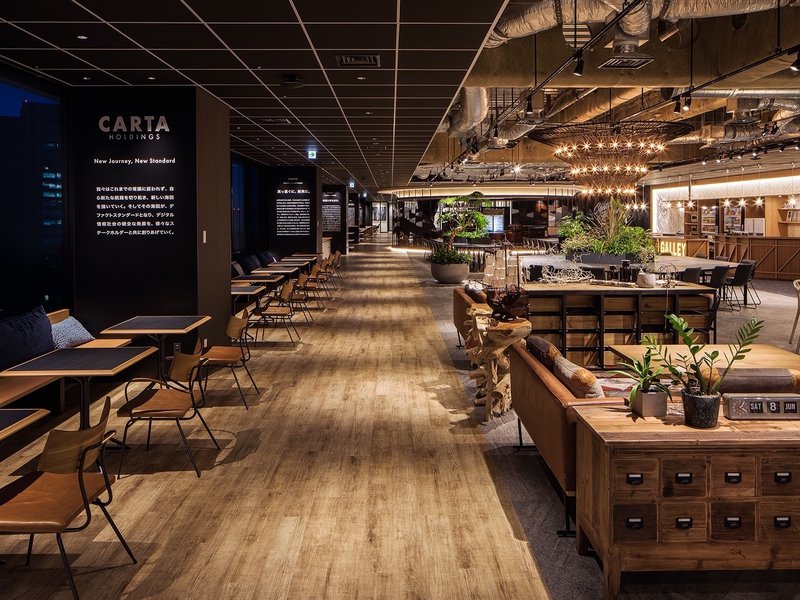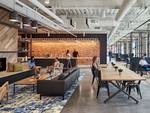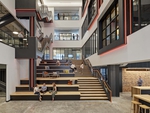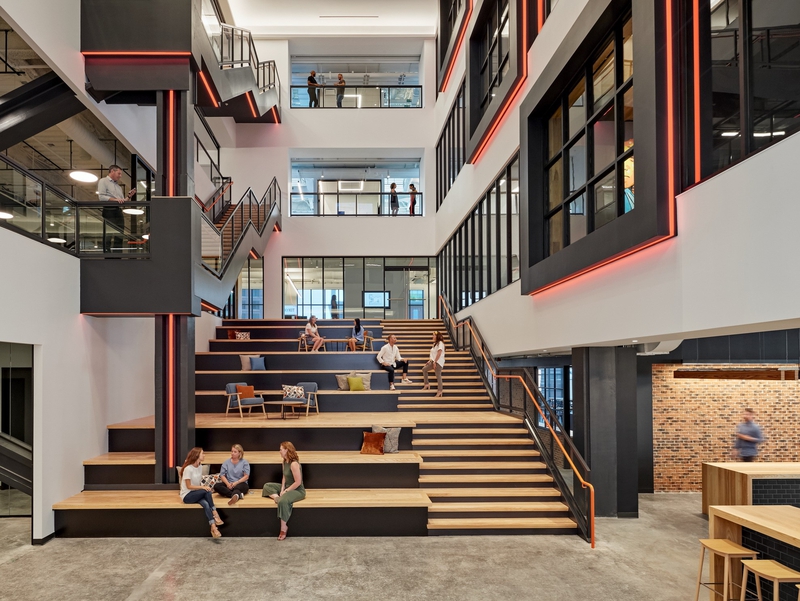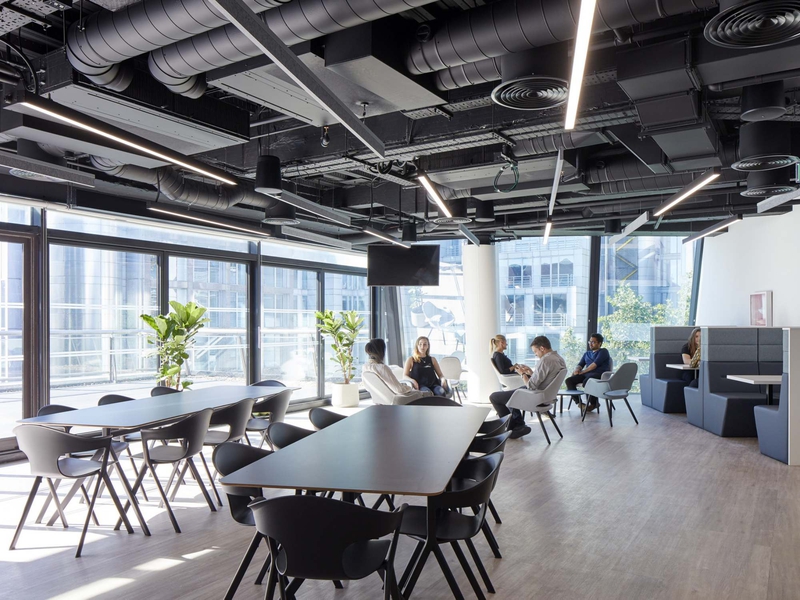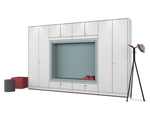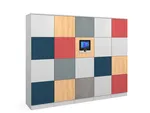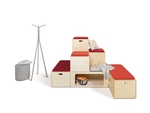4 Feb 2020
Industry Trends
Following on from our Top 8 Workplace Trends for 2020 blog, we’re now at looking at some of those trends in more detail: continuing today with Tech Fusion.
While it’s important to keep up with technological progress, it’s even more important to stay focused on people and their needs. People today are used to mobile technology that makes their home lives more convenient and their customer experiences seamless: just think of how easy it is to use Uber, Amazon or, yes, Seamless. But what about when they go to their jobs? Shouldn’t they expect the same seamless experience from their workplaces?
The tech industry is leading the way here again, with Silicon Valley giants building model workplaces that should inspire every other industry. A large part of this has to do, unsurprisingly, with how they use technology. Not only are they embracing the new disruptive technologies that will shape the future—they are doing so in an integrated, efficient manner that improves their employees’ experiences.

What is Tech Fusion?
A well-planned stack of software and technology allows staff to move between different devices and platforms with ease; just as they’re used to doing at home. To build this stack, we need Tech Fusion. What we mean by “Tech Fusion” is bringing together all of the diverse technologies employees use and combining them into an integrated system that every employee can use.
It’s about convergence: bringing different offices, teams and remote workers, and all the hardware and software they use, and work they produce, and different ways they communicate with one another, together in one shared space that traverses the digital and physical workplaces.

What Kinds of Elements Need Fusing?
Short answer: nearly everything.
Longer answer … businesses today use many, often hundreds, of different platforms and technologies: there’s software, including email, instant messaging, social media networks, intranets, video conferencing and presentation tools, specialist tools and mobile apps; and hardware, including computers, phones, wearables like smart watches and glasses, mixed-reality headsets and more.
All of these elements need to be integrated into a stack, and how you design this stack is just as important as how you design your office when it comes to efficiency.
The stack is the next stage of the office. Workplaces have grown larger than their buildings, and working hours now extend long after those buildings are closed for the day. The digital parts of a workplace are more important than ever, and Tech Fusion allows each of them to be accessed from anywhere, at all times, if necessary. It allows for an intuitive and user-friendly system that can easily be accessed through simple devices like phones and laptops.
Furthermore, Tech Fusion allows this stack to grow to encompass the office itself: companies can build an Internet of Workplace in which devices, furniture and utilities are all connected together online. We’ve long advocated for offices in which employees can choose where and how they work; and now, with the Internet of Workplace, staff can have even more control over their immediate environment, from how bright it is to how warm it is.
The Future of the Integrated Workplace
The ways in which we interact with our workplace stack will also continue to evolve. At home we’re used to using our voices to communicate with Apple’s Siri, or Amazon’s Alexa; soon we’ll be able to control our working environment like this as well, and call up our emails, for instance, or our calendars just by speaking to our furniture. With Tech Fusion, a simple interface like this can do all sorts of things.
“Mixed reality” (by which we mean the blending of reality with computer-generated imagery, either in dedicated mixed-reality headsets, or with simpler tools such as our phones) offers a different kind of interface for connecting up different parts of the stack. Soon, employees will be able to work in a mixed-reality space that brings together hardware, software and cloud services in a seamless way—just one of many possible paths forward for Tech Fusion.
The Benefits of Tech Fusion
Following the example of Silicon Valley, forward-thinking companies should build their own bespoke tech stacks according to their own specific needs. Not only will their stack be accessible to them anywhere, but it can also be rolled out across their global offices with ease—it’s simple to scale it up.
Tech Fusion can further benefit employees in two key ways.
The first is personal: because digital workspaces are easily customisable, a uniquely personal experience can be built for every employee. Which is important because, as we mentioned in our last blog, there’s no “one person fits all” solution when it comes to hiring a great workforce.
The second benefit is collaborative: properly implemented, Tech Fusion allows employees to share more wherever they are, so that colleagues all around the world can work together and exchange new ideas immediately and intuitively.
The cumulative effect of all these benefits, of course, is increased efficiency. By providing employees with a seamless experience as they move between different devices and platforms and places and tasks, they’re empowered to focus on doing their jobs well. Technology is here to make our lives easier, not harder—and when it’s all fused together and integrated, it really will.
Share this article




